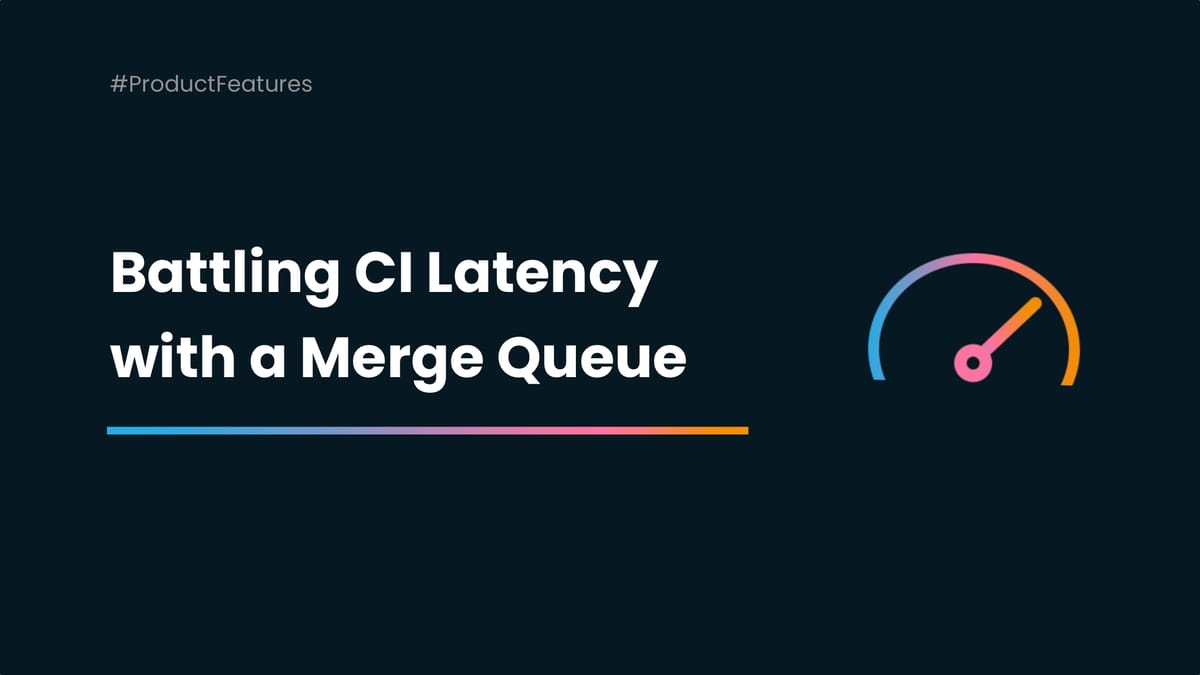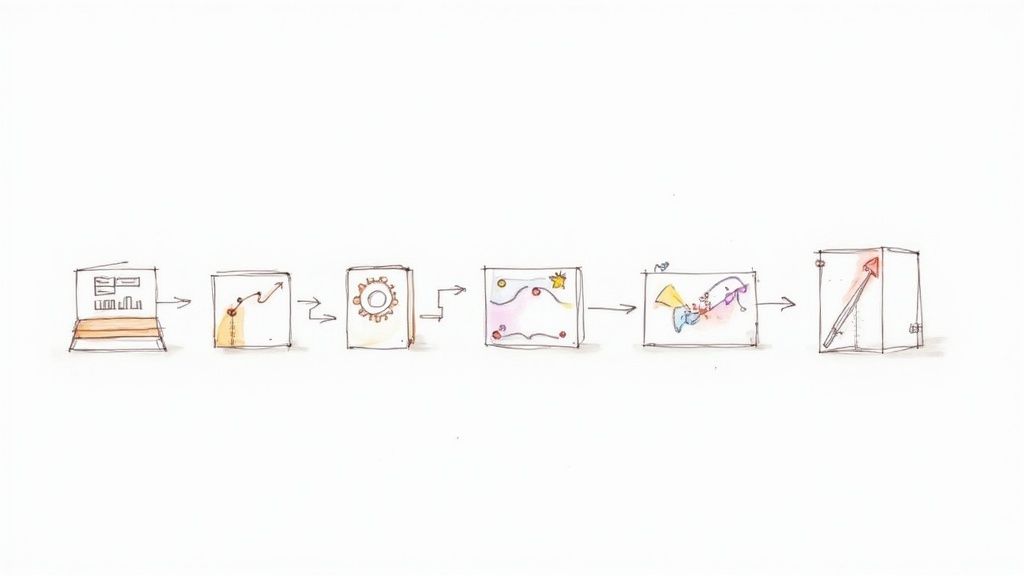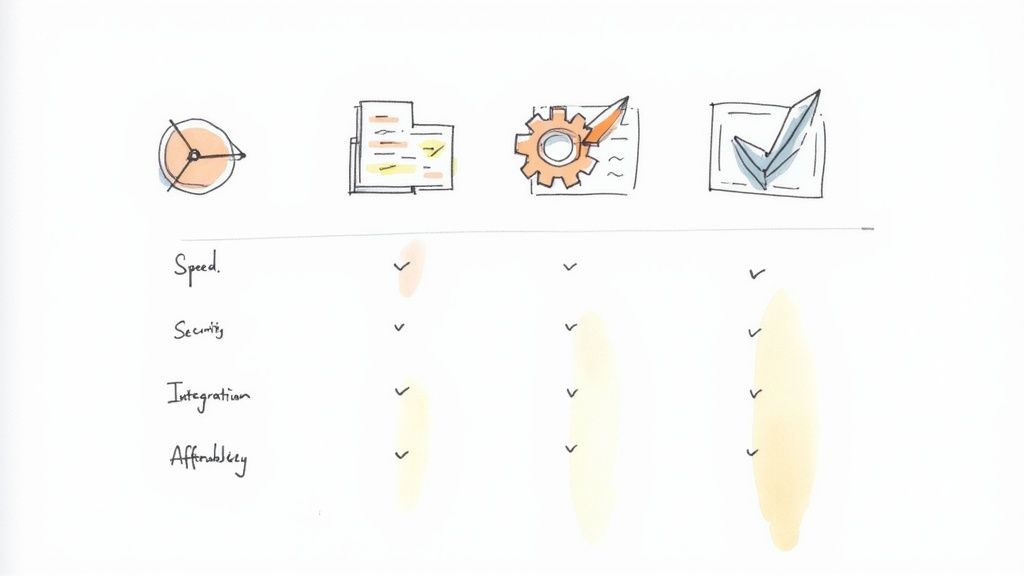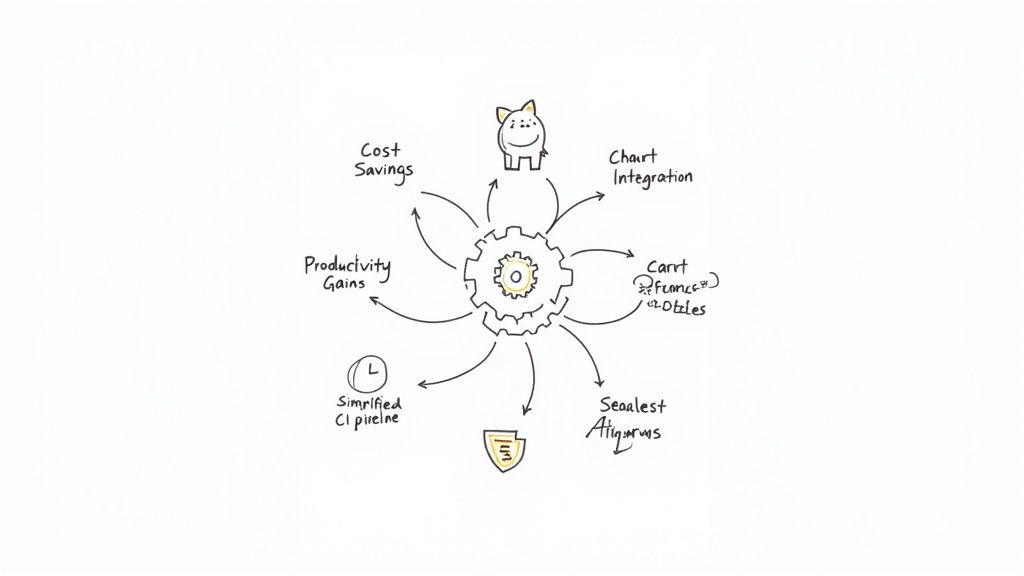Battling CI Latency: When Merge Queues Become Your Best Friends

Ever felt like CI is that overzealous friend who never lets you take a breather? You know, the one who insists on running a full marathon (read: functional tests) every time you want to go for a casual stroll (ahem, pull request)? Well, it's time to introduce this friend to the laid-back cousin - the merge queue.
In the bustling city of Software Development, our good friend Continuous Integration (CI) can be a bit of a workaholic, not knowing when to take it easy. Running functional tests on every pull request is like ordering the 7-course meal when you're just in for a snack - it's overkill and can lead to some serious heartburn in terms of cost and latency. But fret not! We've stumbled upon a chill-out zone that's set to bring the balance back, and it's called a merge queue.
So, sit back, grab a cup of your favorite brew, and let's explore how merge queues with batches might be the secret sauce to a more laid-back, efficient, and cost-effective CI process.
Understanding Functional Tests
Let's dive into the nitty-gritty of functional tests, shall we? Think of them as your software's ultimate test of character. They're here to answer questions like: Does your software do what it's supposed to? Can it make that tricky leap from theory to practice? Essentially, functional tests check if your software's features are, well, functioning as expected.
These tests aren't just here for the fun of it (even though we do love a good test!). They play a vital role in confirming that your code changes don't throw a wrench in the works and cause functionality nightmares. Imagine them like a detective, examining each function of your software under a magnifying glass for any tell-tale signs of foul play.

But here's the catch: These detectives are meticulous. They're thorough. And as much as we appreciate their attention to detail, they can take a while to wrap up their investigations. This means running these tests can be as long as that never-ending director's cut movie you once watched. And, just like that overpriced movie popcorn, they can be costly too.
The Challenge with Running Functional Tests on Every Pull Request
Imagine having a meticulous home inspector over every time you decide to move your coffee table a little to the left. Sure, you'd be certain that your house is always in top shape, but after a while, you'd start to feel that it's a bit... excessive, right?
That's pretty much how your CI feels when you run functional tests on every pull request. It's like treating every small change as if it's a complete home renovation when sometimes, all you did was change the light bulb.
Running functional tests on every pull request means your CI is always in overdrive. It's like having the gas pedal floored all the time, which not only burns through fuel (read: your resources) but can also lead to some serious wear and tear on the engine (read: your patience and time).

The cost of running these tests isn't just financial. Sure, the hefty AWS or GCP bills at the end of the month can be a bitter pill to swallow. But the real kicker is the latency. Waiting for functional tests to run on every pull request can feel like waiting for a sloth to finish a 100-meter dash. It's agonizingly slow and can seriously hamper your development speed.
Running functional tests on every pull request means your CI is always in overdrive, burning through resources and time. But worry not; there's a solution on the horizon: the merge queue. Ready to dive in? Let's go!
The Merge Queue: A Potential Solution
So, your CI is pulling its hair out, and you're looking for a breather. Enter the merge queue, a neat little trick that might just turn out to be the spa day your CI desperately needs.
Picture this: Instead of hailing down every taxi that passes (that's what you're doing when you run functional tests on every pull request), you decide to wait at a taxi stand (a.k.a., the merge queue). You're not alone; there are other passengers waiting, too. When there's enough of you, you all hop into a minibus taxi, and off you go.

It's a similar concept to the merge queue. When a pull request is ready, you put it into the queue. It sits there, chillin', waiting for some company. When the queue fills up, voila, you start a batch, and that's when you run the functional tests.
This way, instead of performing a deep inspection for every minor change, you're doing one comprehensive check for a batch of changes. It's like hosting a dinner party instead of having individual guests over every night. It's not only efficient but also less taxing on your resources and time.
But how does this look when we get into the details? Let's continue our journey in the next section as we explore the magic of using batches in a merge queue.
Using Batches in Merge Queue
Having understood the concept of a merge queue, let's dive into its central feature: batches. Just like baking cookies, instead of painstakingly crafting one cookie at a time, we make a whole batch at once. It's quicker, more efficient, and, let's be honest, way more satisfying.

In our CI world, a batch is a group of pull requests in the merge queue. Once we've got enough pull requests (or when our cookie dough is ready), we compile them together and run our functional tests. This way, we're testing multiple changes at once instead of going through them one by one.
The beauty of this approach lies in its efficiency. You're making the most of your resources by running tests on a group of changes rather than individually. This means less time waiting for tests to complete and more time for actual development. And isn't that what we all want: more time to create and innovate and less time watching a progress bar inch forward?
Of course, like everything in life, this approach has its highs and lows. It's time to look at this method with a critical eye and weigh the pros and cons. So, let's roll up our sleeves and dig into the benefits and potential drawbacks of using a merge queue with batches.
Benefits and Potential Drawbacks of Using a Merge Queue with Batches
Like a well-balanced diet, our approach to CI should have a little bit of everything. Merge queues with batches offer some delicious benefits, but they also come with a sprinkle of drawbacks. Let's chew on both sides.
The Tasty Bits:
- Efficiency: Running tests in batches means you're getting more bang for your buck. You're using your resources wisely and testing more changes in the same amount of time.
- Speed: Less time waiting around for tests to finish means your development process is faster. It's like taking the express train instead of the local – you're getting to your destination quicker.
- Cost-effective: Since you're running fewer tests overall, you'll likely see a drop in those pesky cloud computing bills.
The Not-So-Tasty Bits:
- Delayed Feedback: Since you're not testing every pull request immediately, developers might have to wait a bit longer for feedback on their changes.
- Complexity: Implementing a merge queue with batches can be a bit more complex than the traditional every-pull-request-gets-a-test approach. You might need to invest some time and resources to set it up initially.
- Hidden Defects: When merging a batch of PRs, a defective PR could slip through unnoticed, especially if its issues are masked by another PR in the batch. The whole batch might appear to work, but individually, a PR might not. This can be a risk, and while it may be an acceptable trade-off for some, it's definitely something to be aware of.
So, should you jump on the merge queue bandwagon? It's not a one-size-fits-all answer. It depends on your team's needs, your project's scope, and your resources. But to help you decide, let's take a closer look at how this approach works in real life. Buckle up for our next section, where we'll explore a case study.
Case Study
To better understand how merge queues with batches work in the wild, let's take a look at an example. Imagine you're part of a software development team working on a popular mobile app. Your team constantly makes changes and improvements to the app, resulting in a stream of pull requests.
Previously, your team ran functional tests on each pull request. This was exhaustive and resulted in high AWS bills and a lot of waiting time. To optimize this process, your team decided to try out the merge queue with a batches approach.
So, instead of running functional tests for each pull request, the team puts each ready PR into the merge queue. Let's say the team decided to run functional tests every time there are five PRs in the queue. This is their "batch size."

Once the fifth PR enters the queue, the CI system picks up the entire batch and runs functional tests on the collective changes. The result? The team is able to check the functionality of five different PRs at once, reducing the total number of tests run and, consequently, the cost and time.
But as we noted before, there were trade-offs. The team noticed that developers sometimes had to wait longer for feedback.
Despite these challenges, the team found that the benefits outweighed the drawbacks. The merge queue with batches approach brought a new level of efficiency and cost-effectiveness to their CI process.
The takeaway here? Like any tool or methodology, merge queues with batches aren't a silver bullet. But with a thoughtful approach and a keen understanding of their pros and cons, they can be a game-changer in optimizing CI.
Wrapping Up: The Merge Queue Magic
As we've journeyed through the world of CI, we've explored the concept of running functional tests on every pull request and the challenges that come with it. It's like having a marathon every day – sure, it's thorough, but boy, can it be exhausting (and costly)!

Enter the merge queue with batches, our potential game-changer. It's like hosting a block party instead of individual dinners. It's efficient, cost-effective, and offers a unique approach to managing your CI process. But like any good party, it comes with its own set of challenges – delayed feedback, increased complexity, and the risk of hidden defects.
We've seen how this approach can work in a real-world scenario, bringing tangible benefits and highlighting some potential pitfalls. It's clear that, while it's not a one-size-fits-all solution, it's certainly an option worth considering if you want to optimize your CI process.
At the end of the day, the key is to understand your team's needs, your project's requirements, and the resources at your disposal. With these considerations in mind, you're well-equipped to make an informed decision on whether the merge queue magic is right for you.
So, as you continue to navigate the bustling city of software development, remember: there are always new approaches to explore, fresh methodologies to try out, and innovative solutions to discover. Happy coding!




